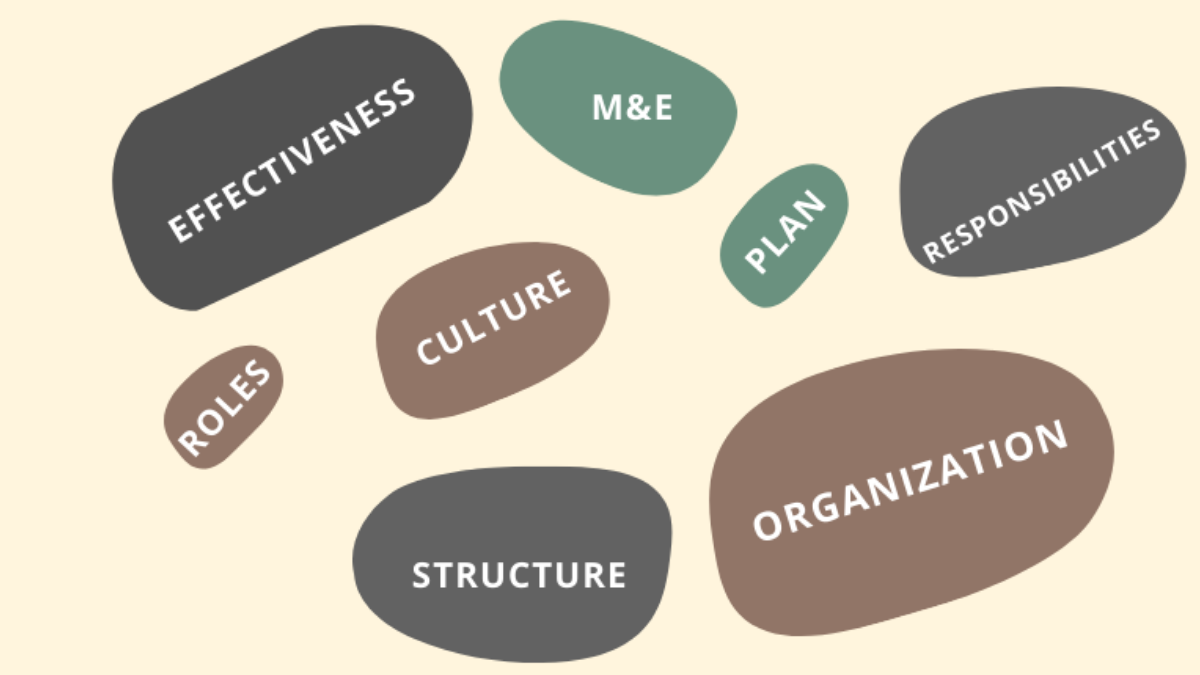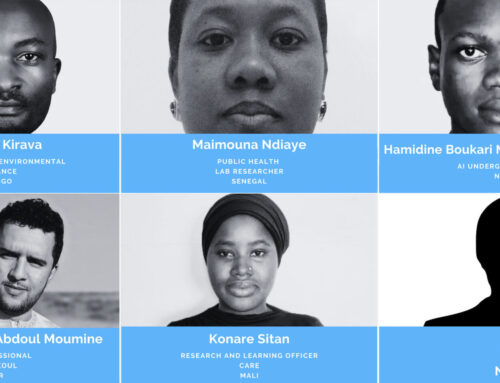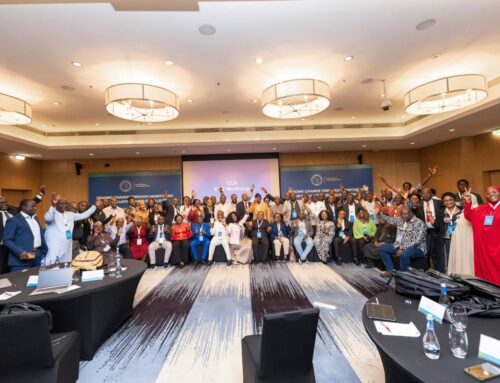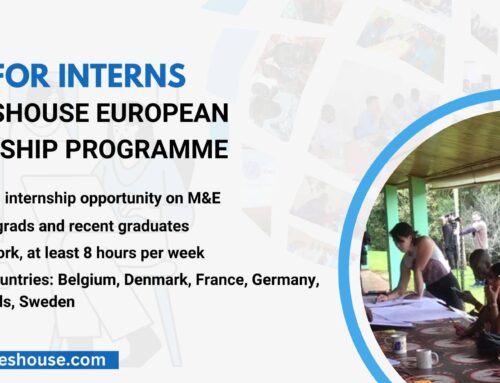Organizational Structure describes the hierarchy, reporting lines, and systematic arrangement of work in an organization. It is depicted in an organizational chart or organogram, showing how the various parts of the organization relate to each other; while Organizational Culture defines the proper way to behave within the organization; it is the set of shared beliefs, assumptions, and values that operate in organizations and is usually unique to the organization. Organizational culture is to an organization, what personality is to an individual.
According to Dena Lomofsky, ”implementing M&E systems is an organization-wide effort that requires rethinking organizational structure and culture”.
So, in rethinking organizational structure and culture for better M&E plans, it becomes necessary to assess where the organization is in terms of structure and culture, where you want to be, and how to get there. It is highly recommended that this flow (as illustrated in the figure below) continues, to enhance steady efficiency and effectiveness in implementing better M&E plans. At Cloneshouse Nigeria, in the past thirteen years, we have assessed eleven government ministries, departments, and agencies; twenty-two non-government organizations; and we found a few of them to have structures that promote and deliver effective M&E.
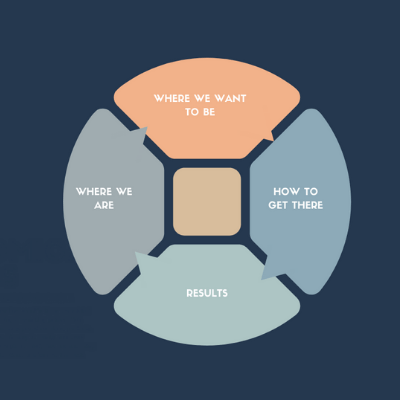
Figure 1. A conceptual model for rethinking and evaluating organizational structure and culture
In rethinking organizational structure and culture for better M&E plans, it becomes necessary to assess where the organization is in terms of structure and culture, where you want to be, and how to get there.
Organizational Structure for better Implementation of M&E Plans
M&E roles and responsibilities are an important element in M&E plans. For example, you can decide very early in a project or programme who is responsible for collecting data for each indicator – this can be clearly shown in a tabular form; also determine who is responsible for data analysis, the person or team responsible for interpreting the collected data, who will be responsible for reporting and sharing distilled information with stakeholders to inform decision-making, and so forth.
I talked a little more about M&E conventional roles and responsibilities in my earlier post on “How to start an M&E Unit within your organization” but here is a quick list of roles and responsibilities below:
- M&E Manager
- Research Officer
- Data Clerk
- Data Analyst
- Communications Officer
Typically, the M&E Manager heads the organization/team and coordinates the other roles.
Following the model in the concept earlier illustrated in Figure 1, Marelize Gorgens and Jody Kusek, in their book – Making Monitoring and Evaluation Systems Work: A Capacity Development Toolkit, explained that the M&E Manager can assess the present situation in terms of the human resources and their capacity; the manager can also indirectly do this with the help of a human resources specialist from within or outside the organization. An M&E Capacity assessment is done to assess each person to locate any gaps in the knowledge, skills, and/or abilities for the ultimate purpose of filling those gaps through capacity-strengthening measures.
Examples of capacity-strengthening activities at the individual level include:
- Training: One-on-one or group training, whether face-to-face or online, can increase personal knowledge and skills surrounding an M&E role or responsibility. Individuals receive the tools they need to take meaningful actions in their M&E roles and can even advocate helping to educate others in the organization, wider M&E community, or personal sphere. You can read my post on how to get the best from a monitoring and evaluation training when you click here.
- Mentorships: Mentoring provides intensive, personalized guidance and can effectively build knowledge and skills. By learning from those with expertise and experience in the M&E field, mentees can gain confidence and build personal and professional networks.
- Internships: This can be in the medium or long term plan. It is a period of training spent in an M&E organization by a young evaluator to gain vast experiential knowledge in M&E planning and implementation. Usually, anytime between 3 – 6 months is enough time for an intern to grasp a lot in an active M&E organization.
Ultimately, capacity strengthening takes the individual/team from where they are to where they ought to be, which in turn enhances efficiency and effectiveness of implementing M&E plans in an organization.
An M&E Capacity assessment is done to assess each person to locate any gaps in the knowledge, skills, and/or abilities for the ultimate purpose of filling those gaps through capacity-strengthening measures.
Organizational Culture for better Implementation of M&E Plans
There are several ways to classify different types of organizational culture, however, beyond classification, it behoves the M&E manager to adopt and promote a culture that enhances the entire process of implementing an M&E plan successfully, using fewer resources and less time.
Developing the ideas of Harrison, Handy describes four main types of organisational cultures: power culture; role culture; task (or team) culture; and person culture.
- Power Culture: In this type of organizational culture, power is concentrated among a few people, and your relationship with that person matters a lot more than your title. Accordingly, there are few rules and not much bureaucracy in a Power Culture because whatever the Leader or M&E Manager says, automatically becomes the law
- Role Culture: This commonly features well-defined jobs with explicit expectations. Role Culture organizations/teams are characterised by a lot of stability, certainty and continuity, but may have trouble adapting to, or generating change.
- Task/Team Culture: Teams are formed to take advantage of individuals’ expertise at particular aspects of solving a common problem, whether it is an internal or external M&E project. Cloneshouse Nigeria, for example, adopts and promotes team culture.
- Person-Culture: In person-culture, the expertise of individuals is considered more valuable than the organization.
It behoves the M&E manager to adopt and promote a culture that enhances the entire process of implementing an M&E plan successfully, using fewer resources and less time.
Conclusion
At the heart of a successful implementation of an M&E plan is the need for effective management. The M&E Manager has the responsibility of acting as an integrating agent and to coordinate, guide and direct the efforts of members towards the achievement of goals and objectives. A participatory approach to the process of strengthening organizational structure and modifying organizational culture is important because it builds buy-in or acquiescence, institutional knowledge and enhances the relevance of the resources for successful implementation of an M&E plan.

